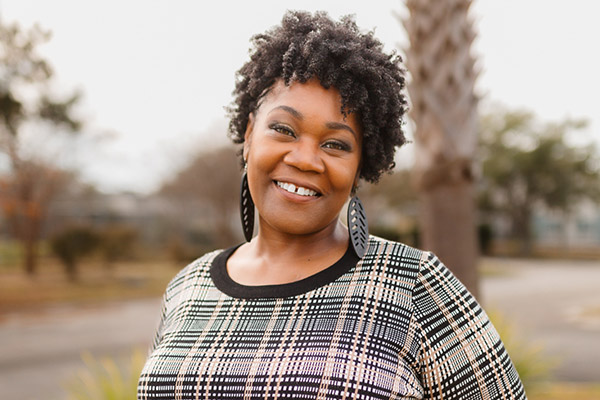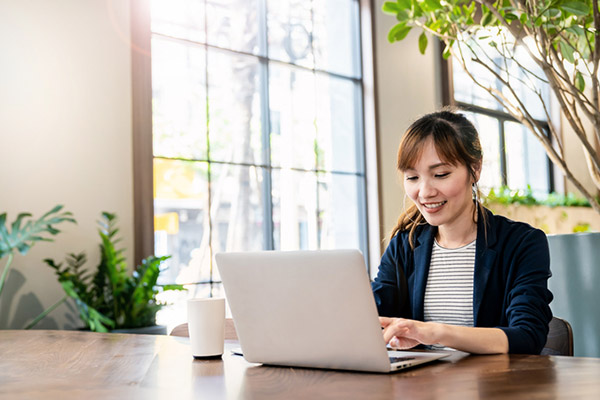03/09/2021

Part 1 of this two-part podcast celebrates the launch of the third edition of Carole Osborne’s book Pre- and Perinatal Massage Therapy. We’re joined by Carole and her co-authors, Michele Kolakowski and David Lobenstine, as we discuss how therapists can work with clients across the trimesters of pregnancy, through labor and birth and during the postpartum period, establishing a continuum of care.
Author Resources:
“Breathing, Positioning & Blood Clots: Doing No Harm with Prenatal and Postpartum Massage Therapy During the Coronavirus Pandemic,” by Carole Osborne, Massage & Bodywork magazine, September/October 2020, page 54, www.massageandbodyworkdigital.com/i/1276187-september-october-2020/56.
“Reflections on Touch in a Distanced World: What I’ve Learned (So Far) From COVID,” by David M. Lobenstine, Massage & Bodywork magazine, January/February 2021, page 68, www.massageandbodyworkdigital.com/i/1315831-january-february-2021/70.
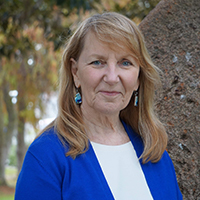
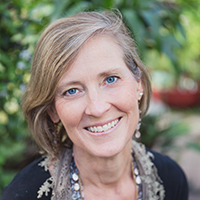
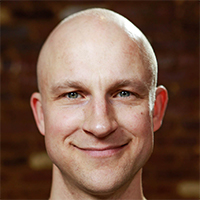
This podcast sponsored by:
About our sponsors:
Anatomy Trains
Anatomy Trains is a global leader in online anatomy education and also provides in-classroom certification programs for structural integration in the US, Canada, Australia, Europe, Japan, and China, as well as fresh-tissue cadaver dissection labs and weekend courses. The work of Anatomy Trains originated with founder Tom Myers, who mapped the human body into 13 myofascial meridians in his original book, currently in its fourth edition and translated into 12 languages. The principles of Anatomy Trains are used by osteopaths, physical therapists, bodyworkers, massage therapists, personal trainers, yoga, Pilates, Gyrotonics, and other body-minded manual therapists and movement professionals. Anatomy Trains inspires these practitioners to work with holistic anatomy in treating system-wide patterns to provide improved client outcomes in terms of structure and function.
Website: anatomytrains.com
Email: info@anatomytrains.com
Facebook: facebook.com/AnatomyTrains
Instagram: instagram.com/anatomytrainsofficial
YouTube: youtube.com/channel/UC2g6TOEFrX4b-CigknssKHA
Coaching The Body
Coaching The Body™ is a highly unique approach to therapeutic bodywork that integrates traditional Thai massage techniques, trigger point therapy, and modern neuroscience as a means of efficiently treating pain and restoring normal motion across joints. Manual therapists and movement professionals all over the world have used the Coaching The Body™ approach to relieve pain, unravel complex conditions, and grow their practices. Coaching The Body™ offers both in-person and online training, including a full CTB certification program consisting of 7 body area courses, an apprenticeship program, and a growing online course catalog.
Website: coachingthebody.com
Email: admissions@thaibodywork.com
Facebook: facebook.com/CoachingTheBodyInstitute
Instagram: instagram.com/coachingthebody
YouTube: youtube.com/channel/UCq52UPAjR_POE0fP_oyVgjA
Handspring Publishing
Handspring Publishing specializes in professional-level books for massage therapists, osteopaths, yoga and Pilates teachers, physiotherapists, and other professionals who use touch or movement to help patients achieve wellness. Handspring Publishing’s books are written and produced to serve the professional and educational needs of health and medical professionals, musculoskeletal therapists, and movement teachers. Its list includes bestsellers like Fascial Stretch Therapy by Chris and Ann Frederick, Fascia: What It Is and Why It Matters by David Lesondak, and the just-published third edition of Pre- and Perinatal Massage Therapy by Carole Osborne, Michele Kolakowski, and David M. Lobenstine. Handspring’s books combine attractive and accessible presentations with an evidence-based approach to writing, including referencing the latest research findings. Authors are drawn from the ranks of highly respected teachers and experts in their area of specialization, including Kelly Bowers, Til Luchau, Robert Schleip, Graham Scarr, Gayle MacDonald, and Carolyn Tague, among others. ABMP members save 20% on regular list prices. Visit handspringpublishing.com and use discount code abmp20 to order. Shipping is free to all addresses in the United States and the United Kingdom.
Website: handspringpublishing.com
Email: info@handspringpublishing.com
Instagram: instagram.com/handspringpublishing
Twitter: twitter.com/HandspringLtd
Facebook: facebook.com/handspringpublishing
0:00:00.0 Speaker 1: ABMP members receive 20% off the list price on all Handspring Publishing titles including Pre-and Perinatal Massage Therapy, Third Edition, Hands in Healthcare Second Edition, and Hydrotherapy for Bodyworkers, Second Edition. Visit handspringpublishing.com to learn about these and other books. ABMP members visit abmp.com/discounts to access your discount code and save 20% on all list prices with free shipping to US and UK addresses. Find your next favorite book at handspringpublishing.com. As a massage therapist, you know that truly the world's most beautiful machine is in your hands. You help relieve the pain and pressures that hold your clients back from fully enjoying life. The CBD Clinic massage collection uses ingredients from nature to deliver strong, effective temporary pain relief with aromatic botanicals and natural emollients like CBD. Our tiered pain products let you personalize your massage to meet each client's needs. Be your client's hero by giving them the massage treatment of their dreams with CBD Clinic. Learn more at cbdclinic.co.
0:01:20.6 S1: Sciatica is one of the most common complaints you'll see as a therapist and yet most struggle to resolve it. Learn how to treat this chronic condition in a surprising new way by attending a new free web class from Coaching the Body called Unraveling the Foot-Hip Connection. You'll learn why Coaching the Body says sciatica is not a real diagnosis, what never to do when treating trigger points, the controversial reason why Coaching the Body says most back massages are a waste of time, three hidden fiber pairings that set up almost all cases of sciatic pain and much more. Seating for this free web class is limited. Go to coachingthebody.com/abmpfoot to register now.
[music]
0:02:15.3 Darren Buford: Welcome to the ABMP Podcast. My name is Darren Buford. I'm the editor-in-chief of Massage and Bodywork Magazine and senior director of communications for ABMP.
0:02:22.0 Kristin Coverly: And I'm Kristin Coverly licensed massage therapist and ABMP's director of professional education.
0:02:28.5 DB: Our goal is to connect to luminaries and experts in and around the massage, bodywork and wellness profession in order to talk about the topics, trends, and techniques that affect our listeners' practices. Our guests today are Carole Osborne, Michele Kolakowski, and David Lobenstine. Carole Osborne BA, CMT, BCT, MB is a pioneer of therapeutic massage and bodywork for child-bearing. She has been in private practice for nearly 50 years and has trained over 5000 therapists working with this population. Michele Kolakowski, LMT, CD, and CPD-DONA, CLC has served child-bearing women and babies since 1992, from attending births to massaging at hospitals, and her own private practice to teaching maternity massage across the United States. David Lobenstine, BA, LMT, BCT, MB has been massaging, teaching, writing and editing for over 15 years with a focus on clients at all stages of child-bearing. Hello, everyone.
0:03:28.2 S?: Hi.
0:03:29.2 David Lobenstine: Hello.
0:03:29.7 KC: Hello and welcome, Carole, Michele and David. We're so happy to have all three of you with us here today. So let's jump in and start by introducing the three of you to our listeners. So will each of you tell us about how your bodywork journey led you to specialize in Pre-and perinatal massage therapy. Carole, let's start with you.
0:03:48.2 Carole Osborne: Okay. Well, I had to be part maverick and part pioneer, a sleuth, a collaborator, an explorer, a stumbler. I had to do all of these things in order to really express my desire, my need... That was a personal need, first of all, to figure out how to live in a pregnant body without massage therapy and bodywork, because at the time late '70s, there was a total contraindication to doing any type of massage therapy during pregnancy. At the same time, I had the personal need, I also had an influx of colleagues and friends, clients. So it was the mother of necessity, basically. [chuckle] So that's how I got started, and I had the blessing of having a very rich collaboration with a number of people to help in that exploration.
0:05:00.7 KC: Michele.
0:05:01.2 Michele Kolakowski: Hey, thanks so much for having us. This is such a treat. My bodywork path started in 1992, I was in the middle of my thousand-hour training program to become a massage therapist, and I decided to take an infant massage course, and I found myself sobbing watching this beautiful infant massage video thinking, "That is the sweetest thing I've ever seen." And of course, as we know in our field, touch is the mother of all the senses, and for little ones, it's their first sense that develops in utero. So I started thinking, "Well, if we're massaging babies once they're born on the outside, actually infant massage could begin during pregnancy." So I began an exploration of studying with a number of pioneers, including Carole in 1998, and again in 2000. I loved her evidence-based approach, her style and her career preserving body mechanics that have me still going at year 28. Carole is like my professional mom. We've been in touch over all these many years, and I've enjoyed teaching and working in a private practice and working in a hospital. So it's been a remarkable path.
0:06:18.1 KC: And David how about you.
0:06:21.1 DL: I graduated from the Swedish Institute in 2004 with no real understanding of what I was doing. But I realized, I think pretty early on, that one of the things that captivated me so much about massage was being able to see our clients in these moments of change in their lives and hopefully being able to help them through those processes one way or another with our hands, with our heart. And then quite by accident, it was just a fortuitous scheduling, I took Carole's four-day workshop in 2006, but taught by Linda Hickey, who's one of our emeritus instructors and wrote the foreword for this third edition or wrote one of the forwards, and she was absolutely magnetic. As anyone who has met Linda knows and I was absolutely hooked. It became instantly apparent that, needless to say, there is no greater change in our lives as humans than pregnancy and birth, and then this crazy thing we call parenting. And I knew that I could only participate in a very small part of that, [chuckle] but I wanted to be a part. And so I've been working with pregnant and postpartum clients ever since, and assisting Carole for years and doing the research for the second edition of the book about a decade ago, and I am thrilled to be here today.
0:07:57.9 DB: Listeners, I think you're really in for a treat today, because the reason that we're all meeting is the launch of the third edition of Pre-and Perinatal Massage Therapy. Carole, can you take us back to the first edition and is that in 1998? Is that correct?
0:08:14.7 CO: Yeah. First edition was 1998, so about 15 years into my specializing in this population. And at the time, not many people were publishing. So I self-published, independent woman that I am. And self-published the book, and it's a little thin black and white book that had just a few little bits and pieces, but you can see the DNA of that book through the second edition and through the third edition as well. It was very successful for what I wanted to accomplish educationally, because it was very clear to me that I needed to maximize hands-on time when I had therapists in a classroom with me. But there was way too much data, anatomy, physiology, all kinds of background information that was needed. So I needed to have that well composed and therapists needed to come in having read that book in order for the techniques to make sense. So it satisfied that goal and of course, 'cause it was self-published, it was pretty lucrative for me too, [chuckle] which was wonderful.
0:09:44.2 DB: Let's take a short break to hear a word from our sponsors. Anatomy Trains is excited to invite you to another exciting two-day dissection livestream specialty class, Deep Dive into Joints, April 24th and 25th. This advanced dissection livestream education experience is presented by Tom Myers and master dissector Todd Garcia. In this two-day event, we will examine the blended nature of support for each of the joint areas. The special dissection livestream format allows us to explore more deeply subjects and areas of interest. Visit anatomytrains.com for details. Now, let's get back to the podcast. Carole, did anything like that exist beforehand?
0:10:27.3 CO: [chuckle] There was one other even smaller, little skinny book that was written by a midwife that was more aimed for parents. And then around the same time, Elaine Stillerman, I can't remember what the order was on that, but Elaine's first book, again, another little... My book actually was a little bit fatter compared to those two, but I really appreciated knowing that there were others who were pioneering in the same kind of way. I really targeted mine towards massage therapists, and I was... And other touch professionals, and I was also really committed to assembling what little shreds of evidence especially research evidence that I was able to bring together. And so I think even back then, the book stood out in that way, and therapists really appreciated that. [chuckle]
0:11:36.1 MK: I'll share on the receiving end, having that book on my bookcase in my office, there were so many times where I'd be in the... Starting a session and just stepped out for the client to get on the table and I take the book with me and go back and review. And eventually after having it for several years, it's like some pages start falling out. I remember putting a cup of tea on it at some point. That book was so well-loved, and I had to tape it back together. [chuckle]
0:12:05.8 KC: Always a good fun.
0:12:06.4 MK: I used it so much in my practice...
0:12:08.7 KC: That's wonderful. So Carole, let's fast forward just a little bit. So that beautiful first edition that Michelle's taping because she's loving it so much and using it so much, it's great resource, the second edition comes out. Now, what inspired you... Now, we all know like creating an edition of a book is a big deal. This isn't something that just happens overnight, listeners. It's a big decision, takes a very long time and a lot of work and effort and passion and compassion. What was the impetus or what was that driving force that made you think like, you know what, it is time for a third edition.
0:12:41.0 DL: I think it was that Carole wanted to work really hard for very little money... [laughter]
[laughter]
0:12:51.7 CO: Yeah. That was the real reason. A number of things, Kristin, I think first and foremost, at my age, I'm looking at, "What am I leaving that can be built on? What's my legacy?" I could not possibly be thinking towards bringing my 50-year career to a conclusion without having tidied up and brought current and put my best into that. And it became really clear to me that in order to do that, that this was no longer my work. This was also the work of the people who I have trained, who have gone, in some cases, in David and Michelle's cases and in many others, have gone beyond, which is of course the ultimate honor for a teacher. So the natural two for that were David and Michelle. Once I twisted their arms a little bit that they wanted to work really hard for very little money, then we had a team. We had a team, and this is maybe three or four years ago now. So that's personal as well as professional. But a lot has happened, a lot happens. And fortunately, a whole lot happened between 2012 and now, in terms of our evidence basis for our work, we've been able to dispel a number of myths about massage and bodywork in general. We have a few more hints here and there. There's been more research specifically on massage therapy or various forms of touch. It was really important to bring that all up to date.
0:15:01.9 KC: Tell us a little bit about some of those content changes. We're gonna talk about specifics in a minute, but in general, you say we've made some advances, there was new information. What are some of the bigger sort of topics that you felt either had changed so much that needed to be updated or added as new material?
0:15:20.3 DL: It seems to me to follow and build on what Carole said that we're in this moment of real curiosity about touch, and I think that we've seen this across multiple manifestations from the surge and research about cancer and about hospice care, and all of the things that touch can do for those populations, sports massage is exploding. There are endless, endless examples of this. But I think what's been particularly exciting to us as we moved from the second edition to the third is that there is this real attention to touch and stress, and all of the things that we can do for the stressed body, and then also specifically for touch and pregnancy. And we have known for a long time that there is a horrific under-funding of research on women's bodies in all capacities.
0:16:20.8 DL: It's one of the enduring legacies of sexism in our world. But I think that there is this moment, I hope an enduring one, where there is this huge collaboration between a wide variety of people from MDs, to nurses to midwives, to even manual therapists to acupuncturists, this broad assortment of people who are really passionate about these crucial moments in our lives, these moments that frankly are the reason why humans still exist, because we manage to have babies and raise them. And we're actually honoring that scientifically, and we're actually trying to figure out what is happening in this incredibly complex moment of women's lives. And so I think that what we hope is that we've managed to harness the accumulation of those various fields.
0:17:14.1 DL: So we have a lot now of systematic reviews that are looking at a broad range of individual smaller studies and really trying to compile them. The most well-known ones for us, I think, are the Samueli Institute studies that have been published in the last few years documenting the various elements of touch and its effects on pain, on pain management. In addition, Tiffany Field is one of the researchers who's been doing incredible work for multiple decades now about touch and specifically about pregnant people, about the birthing process, and then about contact with babies post-birth.
0:17:54.7 KC: So David, thank you and thank you for saying it in that way too. Tell us a little bit about how the book is organized. Is it organized into those three sections; pregnancy, labour, and then postpartum?
0:18:05.8 DL: Yeah. We wanted to acknowledge that most therapists who are involved in this or who are curious about this work are initially attracted to working with the pregnant body and that incredible period of time. But then we also wanted to acknowledge that massage therapists have a lot to offer to people during the process of labour and birth, and then also that the underappreciated truth is that the pregnant person needs massage just as much, if not more, when they're now dealing with their baby all the time on the outside rather than just carrying that beautiful being on the inside. And so we have divided the book up into those three parts. I think our aim is to offer what we call a continuum of care, where we're presenting therapists with the possibility that we can do meaningful work, and this is the beginning, and then we encourage additional training for those more specialized experiences as a therapist, but that we really have the possibility to make concrete benefit to the pregnant person to the labouring person and then to the new parent in that long, long, long postpartum period.
0:19:27.0 KC: And when you say long, long, long postpartum period, question for listeners who, this maybe great new information too... How long is that postpartum period?
0:19:36.0 MK: The fourth trimester. Yes, postpartum. There's a lot of debate about how long the postpartum period lasts, and we take a really beautiful step back to take a look at many traditional cultures that have used massage as an integral part of postpartum care. We look at short-term changes and also long-term changes, but one of the things that I think our readers will appreciate, we have some call-outs throughout the book called From the Treatment Room, which are talking about client-therapist interaction and talking a little bit of a client story and how the therapist worked from them... With them. We have a story of a 54-old-year-old woman who had been suffering, who had been in pain for almost three decades and never connected that pain to her caesarean births and just a small handful of the techniques from the postpartum chapter were able to alleviate her pain three decades later. So postpartum could last a long time. [chuckle]
0:20:41.8 CO: And that point that you're making there, Michelle, is one of the reasons why the Continuum of Care concept is so valuable to therapists. Because if one of the things we're trying to do is to be successful in our practices and paying our mortgages and feeding our families, then we need to be able to attract a wide number and be able to address a wide... A variety of needs. And many, many... In fact, if I'm remembering that study, it's somewhere over 75% of people who have been pregnant, who have subsequent and ongoing back pain, it started either in their pregnancy or in their early postpartum time. So right there, you have a plethora [chuckle] of clients who you can work with, if you have that understanding and if you have the skills for sorting that out.
0:21:56.3 MK: I'd love to piggyback on that, that it's also really important to be able to care for women after both vaginal and caesarean births, and we explore that in detail. And we also want to, in the fourth trimester think about, considering the mom and baby as one, like a dyad, one more trimester that they're together. And we talk about how to massage with the baby present maybe in the early weeks, or maybe it's a moment where it's just quiet time for the mom. But the third edition provides amazing detailed guidelines and techniques for exquisite postpartum. We focus on a couple of areas, not only providing nurturance and emotional support, but encouraging abdominal and pelvic floor healing, supporting satisfying feeding of their baby, promoting sleep and rest, and there's some amazing new research that's come out about the benefits of massage for postpartum moms with sleep. We also wanna address preventing strain and pain from taking care of these beautiful little people and potentially older children as well. And as Carole mentioned, we wanna reduce any residual pregnancy or birth pain and promote that structural integrity in her body.
0:23:16.8 DB: You spoke a little bit about the growth in research between the editions. Can you tell me, has there been a growth, an equal growth or larger growth as well in public acceptance during that time?
0:23:28.1 DL: I would say that there has been a huge growth in public acceptance of prenatal massage that hasn't necessarily been kept up by increasing training and experience by massage therapists. So I think we're now at this amazing moment where so many pregnant people are not quite as scared of getting a massage during their pregnancy as they were as a few decades ago, or maybe even a few years ago. We're no longer in that moment that Carole mentioned where massage during pregnancy was a total contraindication. Thank goodness, we've progressed. [chuckle] But at the same time, I think even though a pregnant person can go into their local elements day-spa and hop on the table, that doesn't necessarily mean that we have sufficiently trained the tens of thousands of therapists out there who are doing prenatal massage. And so our hope is with this third edition and with our continued teaching, is that we can make more and more therapists excited about the joy and the challenges of working with this population, and that we can make people excited about getting the real training so that they can really figure out what's happening and how to interact with their clients and how to think critically about what's happening with their clients and thus really give them meaningful work.
0:25:04.6 CO: I think one of the really exciting things that has happened, and Michelle was a part of leading this, however many years ago, that was Michelle, that the two places where there's so much more inclusion of massage therapy in a medical setting is with the two populations where massage was totally contraindicated, which is prenatal work and cancer. [chuckle] And I find that to be a really intriguing... There's a number of things about those two specializations, but that's one of them. And so there are hospitals around the country who... They have antepartum and postpartum, or they have a... And they may even have a unit of massage therapists who are also doers and that are employed all the time. Maybe Michelle, you wanna talk a little bit about the hospital situation there.
0:26:09.4 MK: I think there's been an explosion of integrative medicine in the medical settings and hospitals and medical centers that wanna integrate more touch, more patient-centered care can turn to massage therapy as one of those modalities, Joint Commission, which... The Joint Commission, which accredits hospitals actually requires hospitals to offer patients non-pharmaceutical pain relief. When we started a program that I was involved in at a local hospital here in Colorado, the patients were given a survey. Most of them had never received a professional massage before, but the difference in their pre-massage pain levels and post-massage pain levels 30 minutes later was really significant. So it got that program off the ground. We had a staff of about a dozen trained pre and perinatal massage therapists who worked with patients during pregnancy if they were on bed rest in the hospital, as well as postpartum in the day or two after giving birth vaginally or by cesarean. And it was remarkable. Walk into a room and ask a woman what her pain level was on a scale of zero to 10, and even with pharmaceuticals on board, she might say, "Five, six, seven, eight."
0:27:31.1 MK: And 30 minutes later you would check in between her sleeping and relaxing and her pain level was usually zero, one, two. So it's a pretty profound and very simple intervention that can help. And we also know that when women are cared for and nurtured with touch, it translates into the way they care for their babies. One of my favorite memories from working at the hospital for 12 years was a woman who reported to me that she was having trouble, kinda felt disconnected from her baby, having trouble bonding, and as she was resting there in her hospital bed, her baby was in a bassinet nearby, and the baby began to cry and I asked her, "Would it be alright if we bring the baby right in next to you in bed and side-lying?" And I was doing this beautiful slow effleurage down her back over and over, and the next thing you know, she's stroking her baby in the exact cadence that I'm doing the massage on her back and I was like, "There it is. There's the benefit."
0:28:30.8 CO: Amen. Amen. And you know what? Maybe this is the place for me to say, to me, this work is about by enhancing a person's own internal awareness and their own comfort and their sense of themselves when they are pregnant in particular. The benefit for the baby is tremendous. And not only is Michelle's one example there, but there's a nurse who explored this whole concept of learning to touch and spent her whole career, Reva Rubin, whole career observing and studying the sequencing of how a mother begins to touch her baby. And her defining conclusion is that those women who are touched meaningfully and caringly, in the end, and during their labors, touch their own children more meaningfully and caringly. Therefore, it says to me, then that's an individual who's going to be more secure in him or herself, that individual is gonna be more likely to have a sense of connection beyond themselves, into their community and out into the world. And actually anthropological and sociological research, a lot of it done by James Prescott, was kind of the ground-breaking guy on this, is that those cultures where there's a high level of touch are the most peaceful and the most connected cultures. So Michelle's story there, that one individual, gets multiplied over millions and millions, and basically, we see this as our contribution to a more connected, peaceful world.
0:30:48.6 DB: That is beautifully said. And this is a perfect time to take a break for us to transition listeners, this is the conclusion of part one of our episode today with Carole, Michelle, and David. Please join tomorrow for part two, and we will pick up right from there.
[music]
0:31:09.0 S1: Members are loving ABMP Five-Minute Muscles and ABMP Pocket Pathology, two quick reference web apps included with ABMP membership. ABMP Five-Minute Muscles delivers muscle-specific palpation and technique videos, plus origins, insertions, and actions for the 83 muscles most commonly addressed by bodyworkers. ABMP Pocket Pathology created in conjunction with Ruth Werner, puts key information for nearly 200 common pathologies at your fingertips and provides the knowledge you need to help you make informed treatment decisions. Start learning today. ABMP members, log in at abmp.com and look for the links in the Featured Benefits section of your member home page. Not a member? Learn about these exciting member benefits at abmp.com/more.



